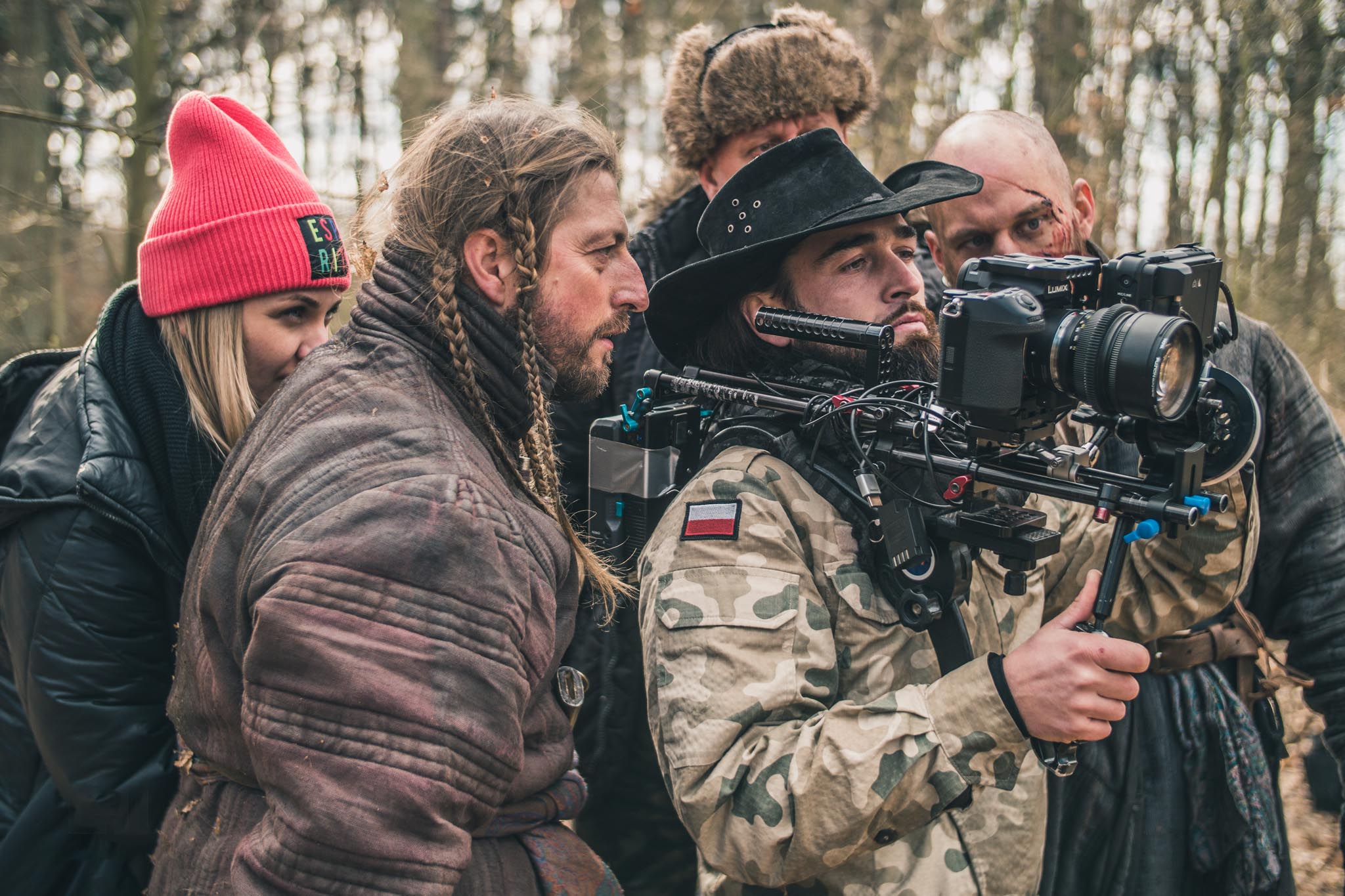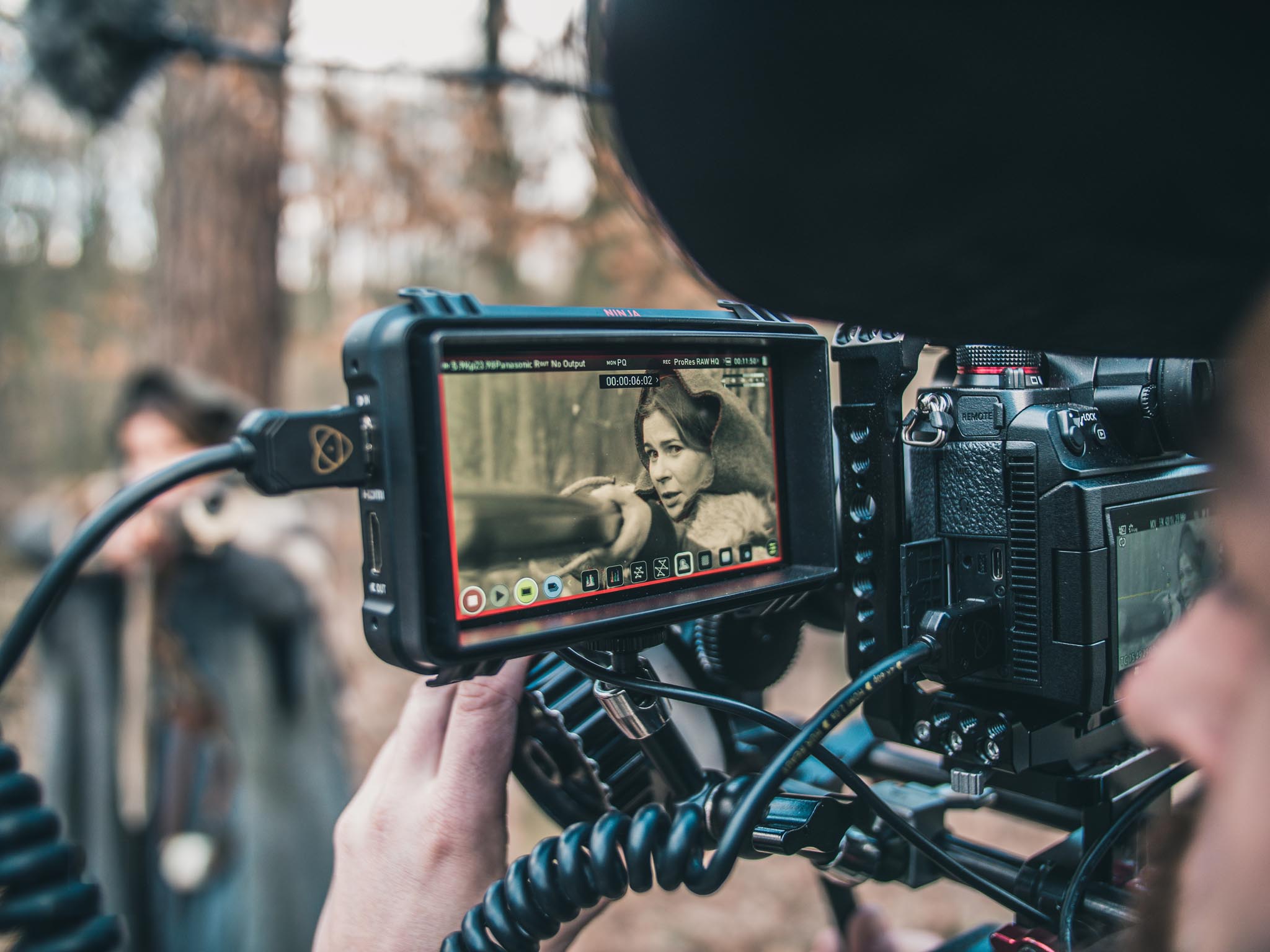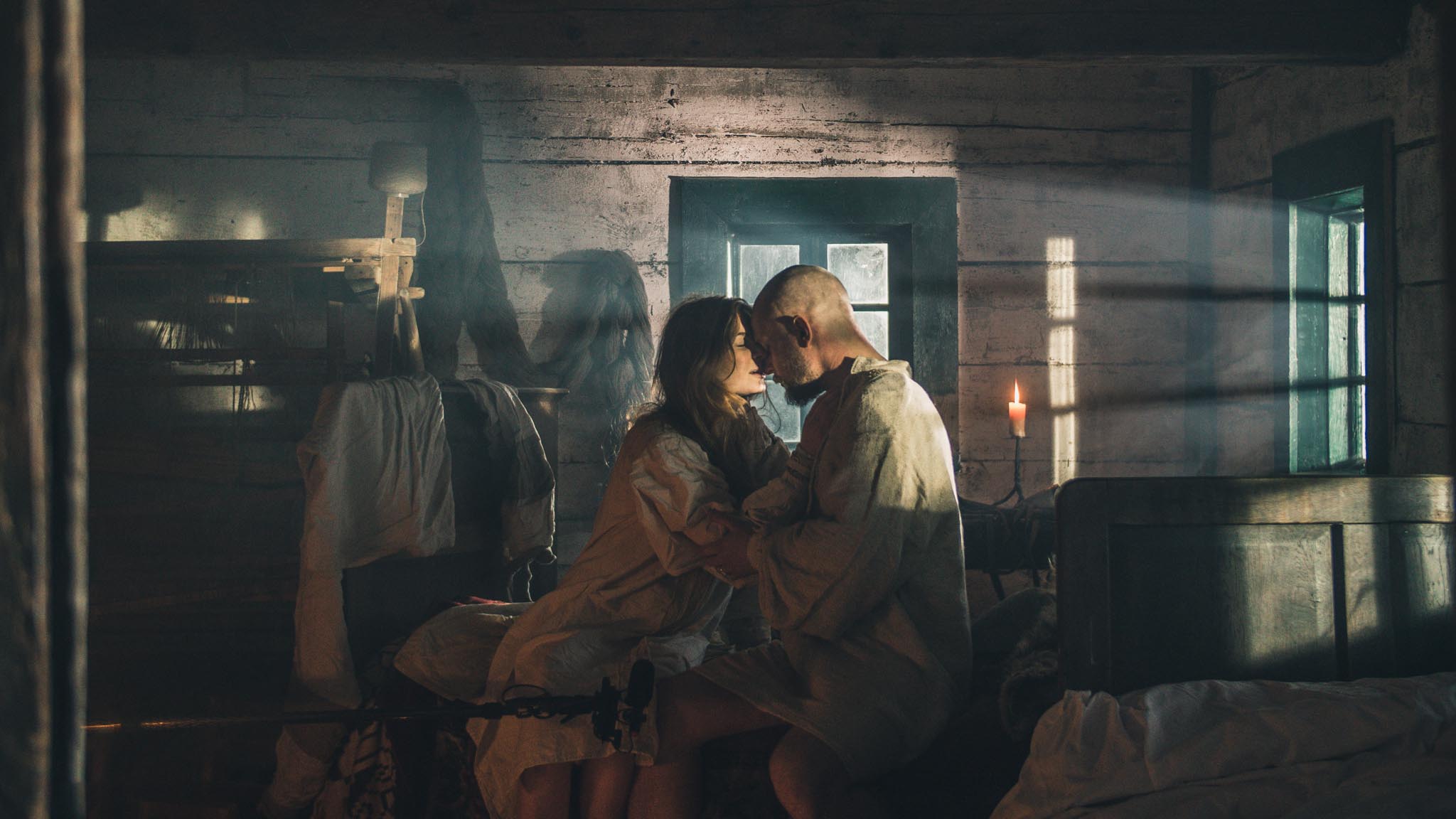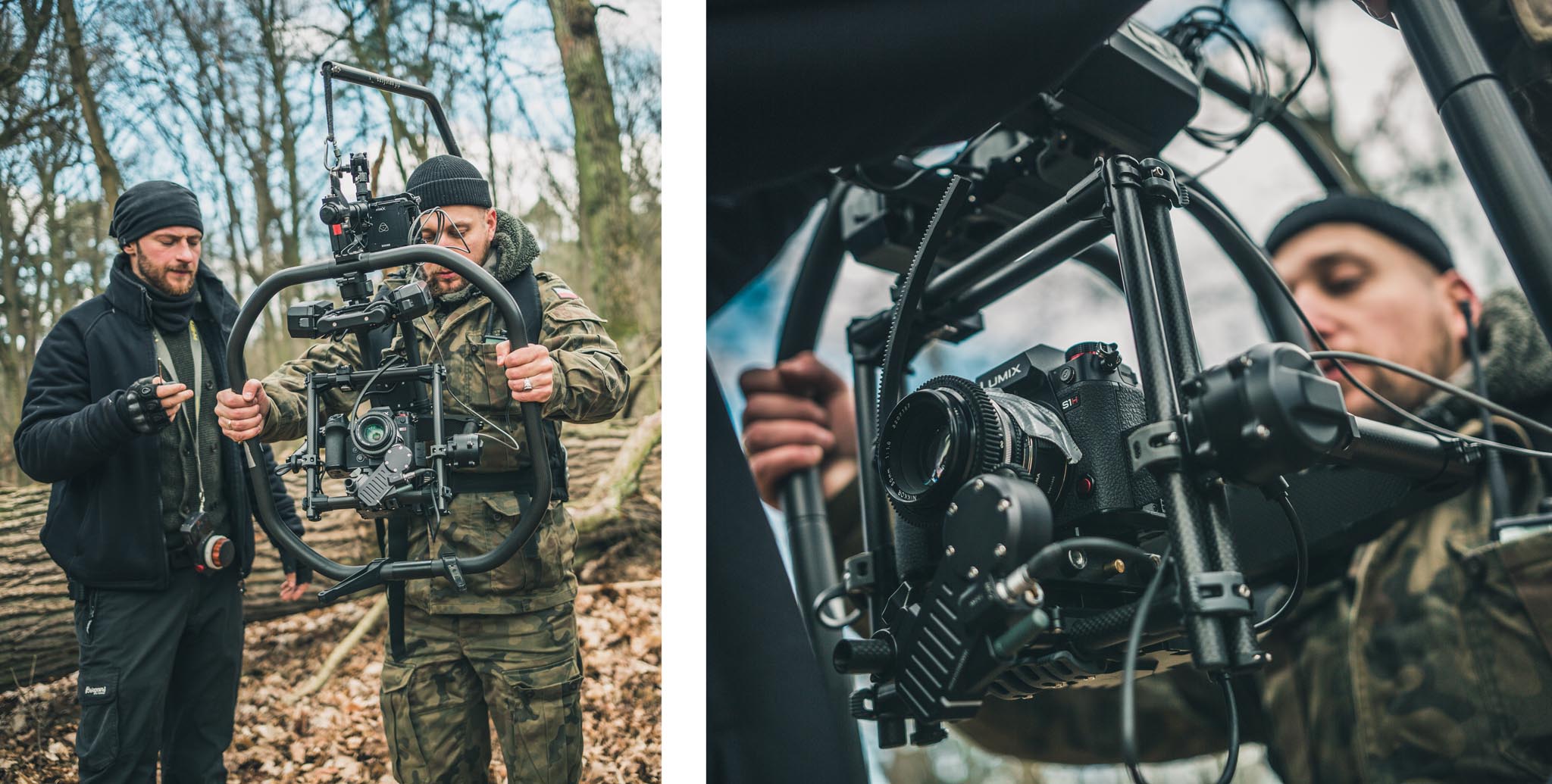Panasonic and Atomos recently worked with Chris Sieniawski on a short film to demonstrate the Panasonic LUMIX S1H recording Apple ProRes RAW onto the Atomos Ninja V. The film is Blind Love.
Dan Chung, Chief Marketing Officer of Atomos, was on a lock-down chat from London. We were joined by Krzysztof (Chris) Sieniawski in Warsaw. Here is an edited summary of our discussion.
Dan Chung: Chris Sieniawski is an excellent cinematographer from a country with a great tradition of filmmaking. He comes from a background, interestingly, of stunt work on some major movies that you might have seen. And now he’s turned his eye and hand to cinematography. Recently, he did the docudrama Born For The Saber.
Chris Sieniawski: Thank you for these kind words. Excuse me for a second, I’m just pouring a gin and tonic for myself here in locked-down Poland. So, Born For The Saber is a historical epic movie that we did with very little money. History Channel distributed it in more than 35 countries. Now we are working on another historical based film set in 17th century Poland.
Dan: That docudrama was entirely shot on a Panasonic GH5 cameras, amazingly, and recorded on Atomos Ninja Infernos. So Panasonic and Atomos decided to work with Chris to create a demo film with the S1H recording ProRes RAW onto the Atomos Ninja V. The short film is named Blind Love.
Chris: It is almost four minutes. We have a lot of action scenes and a little story. It’s basically a drama based on the theme of a pursuit, a mysterious love story in the background and a lethal knife fight in the final scene.
We recorded ProRes RAW in 5.9K from the S1H onto the Ninja V. We only had one camera but we were able to switch quickly among different rigs. We shot on a gimbal, handheld, and other setups. It was very interesting for me because I had never worked in ProRes RAW before, and especially with HDR that the Ninja V helped us achieve. I have to say that I’m absolutely blown away by the quality of the S1H in 5.9K and Ninja V ProRes RAW. It’s something amazing.
Jon Fauer: How did you get started in film?
Chris: I began my stunt career because of my dad was my fencing teacher and the man behind the saber duels in the very well-known Polish movie With Fire and Sword (Dir. Jerzy Hoffman). He was the inspiration for my interest and involvement in film and theater work.
Our team is made up of self-taught filmmakers. My knowledge about filmmaking comes from real-life experience as a stunt and fight coordinator on some major Polish film productions like Battle of Warsaw 1920 (Dir. Jerzy Hoffman, DP Sławomir Idziak) and Karbala (Dir. Krzysztof Łukaszewicz, DP Arkadiusz Tomiak). That is my background, the reason I fell in love with filmmaking and started my own journey in the art of motion pictures.
I’m very grateful to have had the chance to work on big productions with professional filmmakers. Watching how they work and what kind of decisions they make in the process is something priceless. I did not graduate from the film school but that is something I’m both sad and happy about at the same time.
Jon: Tell us about the challenges of a new workflow for you and editing and finishing ProRes RAW.
Chris: The biggest challenge was shooting in Poland in the time of coronavirus. We were fighting against time just to be able to shoot this video before the country was put on lockdown. We had to deal with a big group of people going on the set. Shortly after we wrapped, they shut down production in the entire country. We were lucky.
About the ProRes RAW workflow, you should have a reasonably powerful computer to play back the files. Thunderbolt 3 computers like a MacBook Pro or an iMac are good. A Mac Pro if you can afford it. You need the right software, like Final Cut Pro X. It’s nice to have an HDR monitor—like the Atomos Sumo 19-inch (and Thunderbolt to HDMI / SDI hardware.)
Jon: On the MacBook Pro 2017 and running Final Cut Pro, are you able to play the ProRes RAW in real time?
Dan: Final Cut Pro X has two playback settings. One is optimized for smoothness and playback and the other is for quality. So you can get it to play back smoothly. You can definitely play back 5.9K in optimization for playback. Basically, what you get is a slightly softer screen image. And then when you put it to best quality, which is 100% normal quality, then it will start to slow down. And that’s where you’d really want either the latest MacBook Pro or a Mac Pro.
Jon: To begin the editing process, did you transcode?
Chris: We transcoded to Apple ProRes Proxy 422 Proxy (1920 x 1080 resolution with a data rate of approximately 45 Mbps).
Chris: Originally, we were going to go to a post-production facility in Warsaw. But then the virus changed things. They closed everything down, so we ended up editing on an old machine.
Dan: It’s quite tale of defeats but Chris has pulled it off to get this done. It’s quite incredible.
Jon: When were the shoot dates?
Chris: It was one, very long shoot day. We worked for 24 hours straight through. Poland went on lockdown a few days later, on March 13.
Jon: Let’s talk about the Panasonic S1H camera. Starting from the front, what lenses did you use?
Chris: We used my Nikon AI-S lenses, 50 mm f/1.8 and 85 f/1.4 mm. They have been modified with EF mounts. To attach to the camera, I had a SIGMA MC-21 EF to L-Mount converter. (The mirrorless S1H has an L-Mount. Flange Focal Depth is 20 mm.)
Jon: What were your settings in the S1H’s menu?
Chris: It was 5.9K Full Frame, 23.98 frame rate, 16:9 aspect ratio, 12-bit HDMI RAW Output, NTSC.
Jon: And the Ninja V Recorder / Monitor?
Chris: I was very happy with Ninja V recorder. You can see the image in wonderful HDR quality. The screen is very bright which was helpful during that sunny day in the forest. We were also using B&W mode with red peaking so we could be very precise about getting things in focus.
Jon: What was your shooting style on this film?
Chris: We were shooting with a shoulder rig, on a gimbal, and handheld. I would like to point out that this particular production was historical in nature. We used period costumes. The two daggers the actors were using were made especially for this production. We rented a historical location, an open-air museum resembling a village from the 17th century. A lot of pre-preparation went into this project before we began shooting.
Jon: How big was your crew?
Chris: About ten people: two camera operators, one camera assistant, two stunt performers/actors, one actress, one sound recordist, a production manager, a military advisor and a makeup person.
Jon: You pulled your own focus?
Chris: We did not have a focus puller crew member. Because we had only one camera and two camera operators, one of us pulled focus while the other was operating. I was working basically on the gimbal and my friend was on the shoulder rig. We had a Tilta Nucleus wireless focus on the MoVi Pro gimbal.
Dan: Normally you would shoot with two cameras, but it’s just that we didn’t have two prototype RAW S1H cameras to lend you at the time.
Jon: What advantages did ProRes RAW give you in post-production?
Chris: I would absolutely say dynamic range. It’s incredible and so is the color quality. The file size is not that heavy, like other RAW files that I have worked with. It’s an advantage regarding the equipment that the file sizes are pretty small. You don’t need to have a lot of storage for all these files. At the end of our 24-hour shoot day, we had recorded a total of only 1.2 TB.
Jon: All right, Chris. I’d better let you get back to your gin and tonic.
Chris: It would be nice if we could share a drink in the same place.
Jon: Next time. It’s been a pleasure talking to you.
Photos thanks to Aleksander Leydo.
This article first appeared in FDTimes April 2020 Issue 101.











